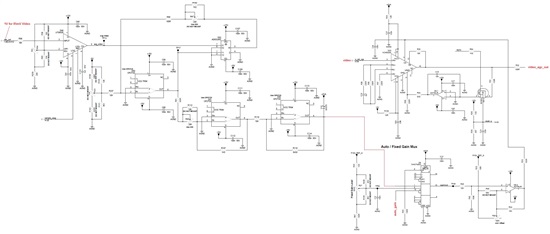Hi
I would like to design a variable gain amplifier using a current feedback amplifier lie the THS3001. Is it possible to change the value of the gain resistors in circuit without causing problems. I am thinking some kind of analog switch to select different values. Or would this be considered a bad idea. If any body has any other thoughts on how to do it then that would be great.
TIA
Jon


